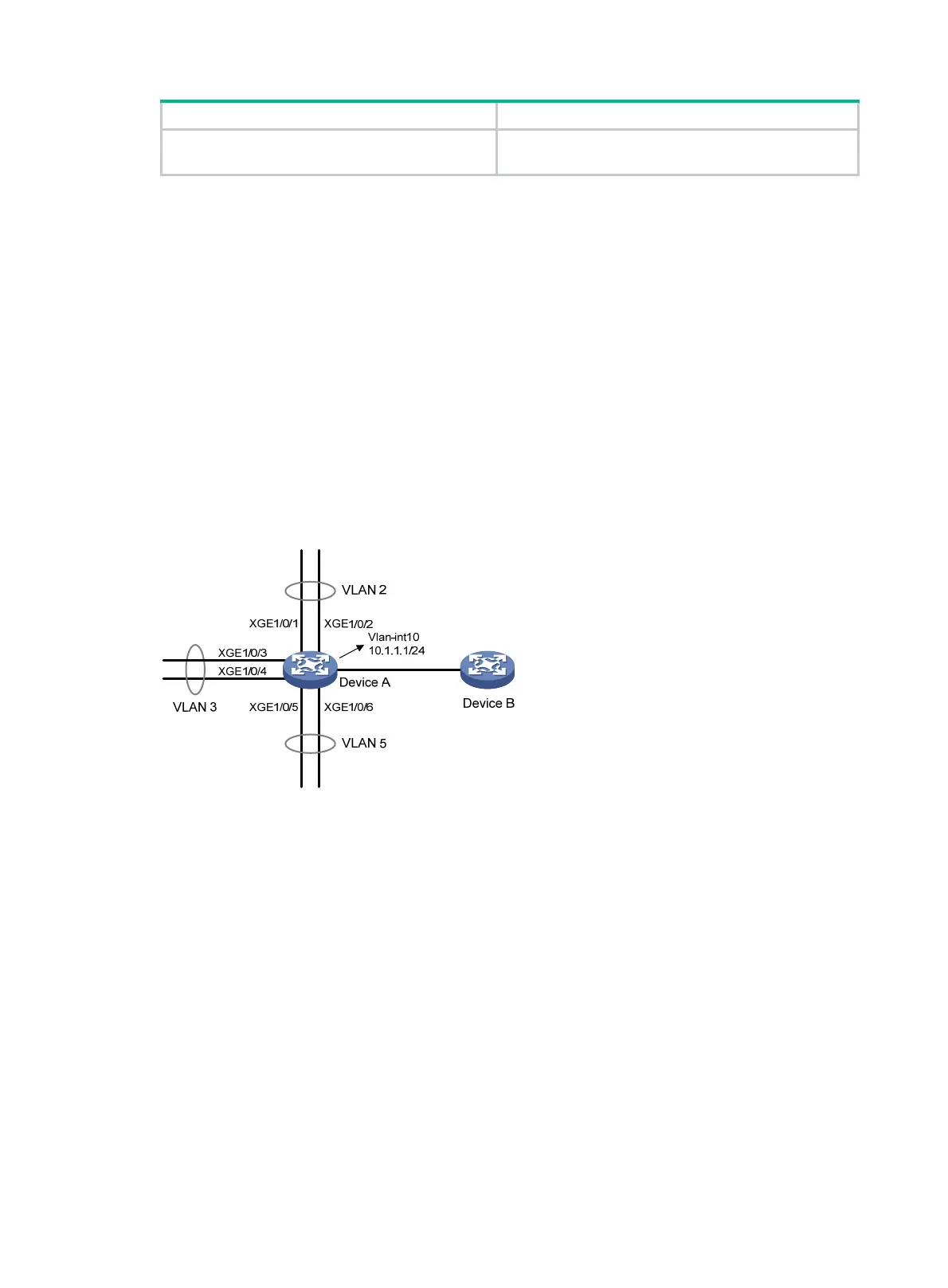173
Task Command
Display information about super VLANs and their
associated sub-VLANs.
display supervlan
[ supervlan-id ]
Super VLAN configuration example
Network requirements
As shown in Figure 57:
• Ten-GigabitEthernet 1/0/1 and Ten-GigabitEthernet 1/0/2 are in VLAN 2.
• Ten-GigabitEthernet 1/0/3 and Ten-GigabitEthernet 1/0/4 are in VLAN 3.
• Ten-GigabitEthernet 1/0/5 and Ten-GigabitEthernet 1/0/6 are in VLAN 5.
To save IP addresses and enable sub-VLANs to be isolated at Layer 2 but interoperable at Layer 3,
perform the following tasks:
• Create a super VLAN and assign an IP address to its VLAN interface.
• Associate the super VLAN with VLANs 2, 3, and 5.
Figure 57 Network diagram
Configuration procedure
# Create VLAN 10.
<DeviceA> system-view
[DeviceA] vlan 10
[DeviceA-vlan10] quit
# Create VLAN-interface 10, and assign IP address 10.1.1.1/24 to it.
[DeviceA] interface vlan-interface 10
[DeviceA-Vlan-interface10] ip address 10.1.1.1 255.255.255.0
# Enable local proxy ARP.
[DeviceA-Vlan-interface10] local-proxy-arp enable
[DeviceA-Vlan-interface10] quit
# Create VLAN 2, and assign Ten-GigabitEthernet 1/0/1 and Ten-GigabitEthernet 1/0/2 to the VLAN.
[DeviceA] vlan 2
[DeviceA-vlan2] port ten-gigabitethernet 1/0/1 ten-gigabitethernet 1/0/2

